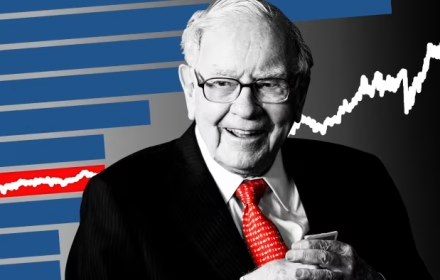Everyone who decides to engage in personal capital management faces the question of choosing a strategy. Depending on goals, investment horizon, and risk tolerance, one can opt for active trading or choose long-term investments. To make the right decision, it is important to understand the difference between a trader and an investor and how to determine one’s own role in the market.
Who is a Trader and What Tasks Does He Solve?
A stock market player is a participant in the financial market who earns on short-term price fluctuations. Deals are made within a day or several weeks. The main goal is to profit from rapid price movements. This is achieved through technical analysis, charts, indicators, and volatility assessment tools.

A typical day for a speculator involves constant market monitoring, opening and closing positions, risk control, and news analysis. High reaction speed and discipline are key qualities. This approach requires a lot of time and psychological stability. This is where the difference between a trader and an investor becomes evident — in approach, investment horizon, and transaction frequency.
The difference between a trader and an investor also becomes apparent when looking at transaction frequency, time horizon, and analytical approach. A trader is a player who reacts to impulses and trends. Profit is generated through a large number of operations with small income from each.
Who is an Investor and Why Does He Act Differently?
An investor is a market participant who buys assets for the long term. The main focus is on fundamental analysis, studying company financial reports, market conditions, and growth potential. Decisions are made less frequently but more thoughtfully.
An asset holder analyzes business value, income dynamics, debt burden, and market niche. They are not chasing quick profits but aim to preserve and grow capital. Unlike a speculator, they do not track every candle on the chart but build a strategy for years ahead.
If asked how a trader differs from an investor, the answer lies in the approach: the former is focused on short-term impulses, while the latter focuses on fundamental changes in assets.
How a Trader Differs from an Investor: Key Differences
For clarity, below is a list of key differences between the two strategies. These parameters will help accurately determine who is closer in money management style. Investor vs Trader comparison:
- A stock player works with short-term positions, while an asset holder deals with long-term ones;
- A short-term player relies on technical analysis, while a long-term player relies on fundamental indicators;
- A speculator opens dozens of deals per month, while a shareholder can hold assets for years;
- A stock player reacts to volatility, while an asset holder builds a portfolio by sectors;
- A short-term player needs fast internet and a terminal, while a long-term player needs company reports;
- A market participant risks more but expects quick returns;
- A shareholder risks less but sacrifices result speed;
- A speculator lives in the market daily, while an asset holder may check the portfolio once a month;
- A stock player often uses leverage, while a shareholder more often invests own funds;
- A market participant values reaction, while a capital owner values strategy.
These characteristics clearly demonstrate how a trader differs from an investor and how to choose an approach at the start of a career.
What Skills Does a Market Participant Need?
An active market participant must be able to make decisions in conditions of uncertainty. Not only technical competence is important but also emotional stability. Below are the main competencies.
- Ability to read charts and use indicators;
- Knowledge of platforms and trading terminals;
- Working with support and resistance levels;
- Understanding scalping and day trading principles;
- Quick adaptation to market trends;
- Emotional control in the moment;
- Strict adherence to stop-loss and take-profit levels;
- Ability to act according to a plan, not emotions;
- Regular feedback and error analysis;
- Discipline in capital management.
Competencies distinguish a successful speculator from a gambler. It is understanding the market and having a clear strategy that show how a trader differs from an investor — the former acts actively and short-term, while the latter is thoughtful and long-term oriented.
How to Choose the Right Strategy?
The choice between trading and investing is not just a matter of interest. It depends on the level of preparation, free time, risk tolerance, and goals. Short-term trading requires full involvement, daily analysis, and continuous learning. Long-term investing is suitable for those who value stability and prefer to observe results in the long run.
Some market participants combine both approaches. To understand how a trader differs from an investor, it is important to test both paths in demo mode or with minimal investments. Only personal experience will provide an accurate answer.
Impact of Time and Capital on Choice
Trading requires daily participation, monitoring news and charts. Investments allow working in the background, dedicating a few hours a month to strategy. If there is a stable income source and limited time, it is better to choose an investment approach. With free time and a desire to act quickly, trading can provide an interesting experience.
Trading Tools and Analytical Approach
A financial analyst often trades indices, futures, currencies, and highly liquid stocks. Charts, levels, signals are used. Technical analysis is applied, candlestick patterns, volumes are studied.
An asset holder focuses on company reports, news, macroeconomic indicators. They are interested in business profitability, debt burden, industry prospects. Multiples, cash flow analysis, dividend policy are used.
This is where the difference between a trader and an investor is most clearly manifested. They have different tools, sources of information, and depth of immersion in fundamental indicators.
How a Trader Differs from an Investor: Main Points
The market does not forgive spontaneity. Before investing money, it is necessary to understand the goals, time resources, and risk tolerance level. Analyzing the differences helps to develop a strategy, choose a pace, diversify the portfolio, and determine the approach to capital.

One is constantly in the market, looking for opportunities, opening dozens of deals. The other waits, analyzes, holds assets for years. Both roles can be profitable if they align with personal goals and capabilities.
The answer to how a trader differs from an investor lies not only in technique. It is about character, discipline, goals. Understanding one’s nature makes it easier to choose a path, build a strategy, and confidently move towards financial independence!
 en
en  ru
ru  de
de  ar
ar  es
es  hi
hi  fr
fr  nl
nl  it
it  pt
pt  el
el 










